Christy K. Robinson's Blog: William & Mary Barrett Dyer--17th century England & New England, page 12
February 13, 2015
William Dyer’s most dearly beloved Mary
© 2015 Christy K Robinson
 In William Dyer's own hand: "to one most dearely beloved."In petitions the attorney William Dyer wrote to the General Court of Massachusetts Bay Colony, he described his imprisoned wife in loving terms. William also mentioned their children and the entire family’s grief at being deprived of Mary by Massachusetts’ unlawful, unjust policies.
In William Dyer's own hand: "to one most dearely beloved."In petitions the attorney William Dyer wrote to the General Court of Massachusetts Bay Colony, he described his imprisoned wife in loving terms. William also mentioned their children and the entire family’s grief at being deprived of Mary by Massachusetts’ unlawful, unjust policies.

William appealed to the members of the court as husbands and fathers, to show compassion both to the prisoner and especially to an honorable, Christian woman who was obeying Christ's command (Matt. 25:40) to love one another by visiting the sick and imprisoned.
These are some of the ways William described his wife of 26 years to men he detested, but to whom he must needs be courteous (intentional use of “court” in courteous) and persuasive, if he was to secure the release of Mary. If William used these terms in a professional communication to his enemies, imagine how he must have spoken to Mary in their home.
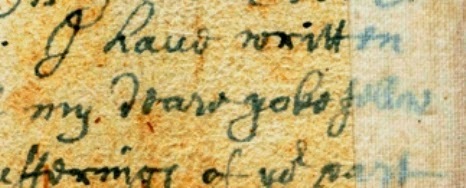 "...my deare yokefellow"
"...my deare yokefellow"
· tender soul· Christian· a tender woman· came to visit her friends in prison · my wife · my deare yokefellow · mine and my family’s want of her will crye loud in yo' eares · my dear wife · husband … to one most dearely beloved · oh do not you deprive me of her… Pity me, I beg it with tears
 To read a full transcription of two letters William wrote, as well as an explanation of words and phrases lost to most of us in the 21stcentury (Bonner, cobhole, Dr. Bostwick, etc.), purchase the Kindle or paperback of
Mary Dyer: For Such a Time as This.
<-- Click the highlighted link. The first of two letters begins on page 227.
To read a full transcription of two letters William wrote, as well as an explanation of words and phrases lost to most of us in the 21stcentury (Bonner, cobhole, Dr. Bostwick, etc.), purchase the Kindle or paperback of
Mary Dyer: For Such a Time as This.
<-- Click the highlighted link. The first of two letters begins on page 227.
 In William Dyer's own hand: "to one most dearely beloved."In petitions the attorney William Dyer wrote to the General Court of Massachusetts Bay Colony, he described his imprisoned wife in loving terms. William also mentioned their children and the entire family’s grief at being deprived of Mary by Massachusetts’ unlawful, unjust policies.
In William Dyer's own hand: "to one most dearely beloved."In petitions the attorney William Dyer wrote to the General Court of Massachusetts Bay Colony, he described his imprisoned wife in loving terms. William also mentioned their children and the entire family’s grief at being deprived of Mary by Massachusetts’ unlawful, unjust policies. 
William appealed to the members of the court as husbands and fathers, to show compassion both to the prisoner and especially to an honorable, Christian woman who was obeying Christ's command (Matt. 25:40) to love one another by visiting the sick and imprisoned.
These are some of the ways William described his wife of 26 years to men he detested, but to whom he must needs be courteous (intentional use of “court” in courteous) and persuasive, if he was to secure the release of Mary. If William used these terms in a professional communication to his enemies, imagine how he must have spoken to Mary in their home.
 "...my deare yokefellow"
"...my deare yokefellow"· tender soul· Christian· a tender woman· came to visit her friends in prison · my wife · my deare yokefellow · mine and my family’s want of her will crye loud in yo' eares · my dear wife · husband … to one most dearely beloved · oh do not you deprive me of her… Pity me, I beg it with tears
 To read a full transcription of two letters William wrote, as well as an explanation of words and phrases lost to most of us in the 21stcentury (Bonner, cobhole, Dr. Bostwick, etc.), purchase the Kindle or paperback of
Mary Dyer: For Such a Time as This.
<-- Click the highlighted link. The first of two letters begins on page 227.
To read a full transcription of two letters William wrote, as well as an explanation of words and phrases lost to most of us in the 21stcentury (Bonner, cobhole, Dr. Bostwick, etc.), purchase the Kindle or paperback of
Mary Dyer: For Such a Time as This.
<-- Click the highlighted link. The first of two letters begins on page 227.
Published on February 13, 2015 14:15
February 9, 2015
Fifty Shades of Blushes
© 2015 Christy K Robinson

Ah, but this 1820 edition of Aristotle’s Complete Master-Piece , a book about copulation, coition, pregnancy, and childbirth published in New England, is not the complete masterpiece it claims to be. How do we know? Because when the 1684 first edition was published in London during the reign of Charles II, there was a section on how to have satisfactory lovemaking. Apparently, that section was banned in Boston! The later edition acknowledges the “unlawful bed” (adultery) and illegitimate babies, but it’s directed at the married couple only. Coition, as the anonymous author (not Aristotle) often refers to it, is for procreation.
In a recent article in The Guardian about the auction of the 1684 first edition sex manual, is a paragraph that doesn’t appear in the PDF of the 1820 edition that I downloaded several years ago. The 1684 is much more racy than the 1820 American version influenced by its puritanical founders. Here’s the 1684 English version:
The manual offers “a word of advice to both Sexes in the Act of Copulation.” One passage advises that “when the Husband commeth into his Wives Chamber, he must entertain her with all kinds of dalliance, wanton behaviour, and allurements to Venery [sexual indulgence], but if he perceive her to be slow and more cold, he must cherish, embrace, and tickle her ... intermixing more wanton Kisses with wanton Words and Speeches, handling her Secret Parts and Dugs, that she may take fire and be inflamed to Venery.”
 An image of the original 1684 edition.
An image of the original 1684 edition.The appendage is a dog's tail, not
what you might suspect. Well, well, well! One can see why, with “Fifty Shades” passages like that, the book was a bestseller in 100 editions for more than two centuries.
By the time it made it through Boston editors in 1820, however, it was a medical book. The drawings of “monsters” looked like the females were wearing bikini tops. In fact, in my PDF is a passage that says this: Since nature has implanted in every creature a mutual desire of copulation, for the increase and propagation, of its kind; and more especially in man, the Lord of the creation, and master-piece of nature, that so noble a piece of Divine workmanship might not perish, something ought to be said concerning that, it being the foundation of all that we have been hitherto treating of, since without copulation there can be no generation. Seeing, therefore so much depends upon it, I thought it necessary, before I concluded the first part, to give such directions to both sexes, for the performing of that act, as may appear efficacious to the end for which nature designed it. But it will be done with that caution, as not to offend the chastest ear, nor put the fair sex to the trouble of a blush in reading it. It would be very proper to cherish the body with generous restoratives, that so it may be brisk and vigorous; and if their imaginations were charmed with sweet and melodious airs, and cares and thoughts of business drowned glass of racy wine, that their spirits may be raised to the highest pitch of ardour and joy, it would not be amiss.And therefore I do advise them, before they begin their conjugal embraces, to invigorate their mutual desires, and make their flames burn with a fierce ardor, by those endearing ways that love can better teach than I can write. And when they have done what nature requires, a man must have a care he does not part too soon from the embraces of his wife… And when, after some convenient time, the man hath withdrawn himself, let the woman gently betake herself to rest, with all imaginable serenity and composure.
 Click image to enlarge As an editor myself, I’m sure that was the replacement of the text on women “taking fire and being inflamed to Venery.” Rats! Darn! No fifty shades of blushing! Not only that, but I had to read half the book before I discovered that this one had no naughty bits. Publishers to Kindle and e-book sites know that they should put the hook or cliffhanger up front and put the acknowledgements at the back of the book, so readers can get the good stuff by browsing.
Click image to enlarge As an editor myself, I’m sure that was the replacement of the text on women “taking fire and being inflamed to Venery.” Rats! Darn! No fifty shades of blushing! Not only that, but I had to read half the book before I discovered that this one had no naughty bits. Publishers to Kindle and e-book sites know that they should put the hook or cliffhanger up front and put the acknowledgements at the back of the book, so readers can get the good stuff by browsing. Dr. not-Aristotle, using classical medical literature, plagiarizing a 1554 text on midwifery, and showing personal experience as a 17th-century physician, described the anatomy of the reproductive organs, how to best conceive, and ways of dealing with problem deliveries. He used both superstition and contemporary medical knowledge in his book. Ovaries were called testicles, common terminology of the time, since they believed that both man and woman contributed “seed” in conception.
Perhaps he remained anonymous because he was very well acquainted with internal anatomy, and was surely conducting autopsies on both humans and animals. For that, he had to pay grave robbers to obtain cadavers, and perhaps hold his labs or demonstration lectures in secret locations.
Conception of a child, diet and posture Though here he describes the best way to select the gender of a baby, a few pages after this, he explains that the baby’s sex comes down to God’s determination.
Then since diet alters the evil state of the body to a better, those who are subject to barrenness must eat such meats as are of good juice, and that nourish well, making the body lively and full of sap; of which faculty are all hot moist meats. For, according to Galen, seed is made of pure concocted and windy superfluity of blood we may therefore conclude there is a power in many things to accumulate seed, and other things to cause erection; as hens' eggs, pheasants, wood cocks, gnat snappers, thrushers, black birds, young pigeons, sparrows, partridges—all strong wines taken sparingly, especially those made of the grapes of Italy. But erection is chiefly caused by scuraum, eringoes, cresses, crysmon, parsnip, artichokes, turnips, asparagus, candied ginger, galings, acorns bruised to powder, drunk in muscadel, scallion, sea shell-fish, Etc, But these must have time to perform their operation, and must use them for a considerable time or you will reap but little benefit by them.
The act of coition being over, let the woman repose herself on her right side, with her head lying low, and her body, declining that by sleeping in that posture, the caul on the right side of the matrix may prove the place of conception, for therein is the greatest generative heat, which is the chief procuring cause of male children, and rarely fails the expectation of those that experience it, especially if they do but keep warm without much motion, leaning to the right, and drinking a little spirit of saffron and juice of hyssop in a glass of Malaga or Alicant, when they lie down and arise, for the space of a week.For a female child, let a woman lie on the left side strongly fancying a female at the time of procreation, drinking the decoction of female mercury four days from the first day of purgation; the male mercury the like operation in case of a male; for this concoction purges the right and left side of the womb, the receptacles, and makes way for the seminary of generation.
 The book goes on to describe why children look the way they do: it’s because of what the mother thinks about most intensely, or with “fright or extravagant laughter.” If she saw a hare cross the road before her, the baby might be born with a “hairy lip” (cleft palate). The author writes, “It therefore behooves all women with child if possible to avoid such sights, or at least not to regard them.” I depicted this common belief in my first novel,
Mary Dyer Illuminated
, and I used some of the information about midwifery to depict Anne Hutchinson’s profession. In 1637, Mary Dyer miscarried the first recorded “monster” in America, an anencephalic spina bifida girl. All babies born with severe defects like that were called monsters, and were considered proof of the mother’s heresy or evil thoughts.
The book goes on to describe why children look the way they do: it’s because of what the mother thinks about most intensely, or with “fright or extravagant laughter.” If she saw a hare cross the road before her, the baby might be born with a “hairy lip” (cleft palate). The author writes, “It therefore behooves all women with child if possible to avoid such sights, or at least not to regard them.” I depicted this common belief in my first novel,
Mary Dyer Illuminated
, and I used some of the information about midwifery to depict Anne Hutchinson’s profession. In 1637, Mary Dyer miscarried the first recorded “monster” in America, an anencephalic spina bifida girl. All babies born with severe defects like that were called monsters, and were considered proof of the mother’s heresy or evil thoughts. Aristotle’s Master-piece also says that babies look more like their mothers because she “contributes the most to it,” or they resemble their mother’s (cuckolded) husband if, in an adulterous liaison, the woman imagines the face of her husband.
The author tasted human ovum! Oh, no he didn’t!(Yes, he must have.) The truth of this is plain for if you boil them, their liquor will be the same colour, taste and consistency, with the taste of bird's eggs. If any object, that they have no shells; that signifies nothing: For the eggs of fowls, while they are in the ovary, nay, after they are fastened into the melus, have no shell.
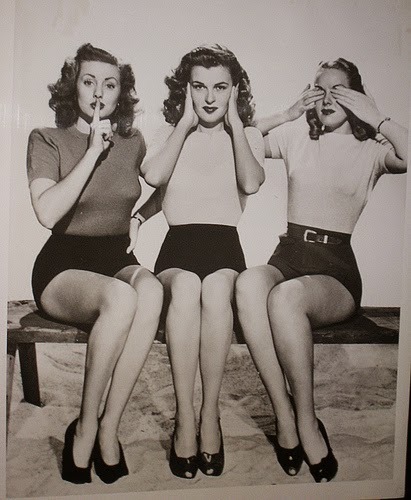 You can read an 1846 version online at https://archive.org/details/8709661.nlm.nih.govthat’s also a redaction of the jazzy release in 1684. But it, too, is missing the original how-to. No blushes, nothing to offend the most chaste ear. Which begs the question, "What is a chaste ear?"
You can read an 1846 version online at https://archive.org/details/8709661.nlm.nih.govthat’s also a redaction of the jazzy release in 1684. But it, too, is missing the original how-to. No blushes, nothing to offend the most chaste ear. Which begs the question, "What is a chaste ear?"
Published on February 09, 2015 21:45
January 19, 2015
Chance to win a free e-book of Mary Dyer Illuminated
 Go to
The Review blog
<--- (click that highlighted link) to see their very nice review by Kristie Davis Dean, of Mary Dyer Illuminated, and leave a comment there (not here) for a drawing to win a free e-book that can be read on Kindles and other devices with the Kindle reading app*.
Go to
The Review blog
<--- (click that highlighted link) to see their very nice review by Kristie Davis Dean, of Mary Dyer Illuminated, and leave a comment there (not here) for a drawing to win a free e-book that can be read on Kindles and other devices with the Kindle reading app*. Don't want to wait that long? You may go directly to Amazon for the paperback or Kindle edition.
Paperback, 390 pages. $19.99 (Amazon discounts this price to just less than $18)
Kindle edition Amazon price $7.99
*Click the graphic below to get the reading app for your computer, tablet, or smart phone.
Published on January 19, 2015 19:07
January 8, 2015
Adding insult to injury--Boston justice in 1639
 Carpenter, ca 1635, by Jan Joris van Vliet© 2015 Christy K Robinson
Carpenter, ca 1635, by Jan Joris van Vliet© 2015 Christy K RobinsonEdward Palmer, a carpenter, came to Massachusetts Bay Colony in 1630 in the Winthrop Fleet with 700 others. As the English settlers followed, perhaps 35,000 of them over the next 10 years, there was a building boom, and Palmer was surely kept busy with building houses and shops, machines like looms or mills or spinning wheels, or furniture, or perhaps working in the shipbuilding trade.
The colony was ruled as a theocracy, basing their laws on the Old Testament, and combining ministers and magistrates as rulers. In addition to the obvious laws about adultery, fornication, stealing, and lying, one could be punished in the stocks for cursing, drunkenness, and speaking against the authorities. The iron "bilbo" they'd brought from England, which was a bar with movable shackles and padlocks, was worn out from regular use or broken/rusted and needed a replacement. Iron was expensive to ship from England, and wood was plentiful in Massachusetts, so a carpenter, Edward Palmer, was commissioned to build a stocks for Boston.
He charged them £1 13s. 7d. for the wood and his labor in building the stocks.
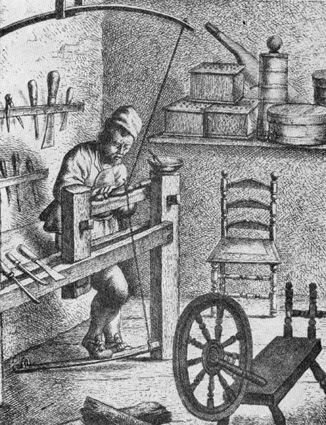 Lathe operator, ca 1635, by Jan Joris van VlietThat's about 23 days' labor in carpenters' wages if the wood was free, but it probably wasn't, and I don't know the cost of the wood. Of course, he'd have to hand-hew the lumber into the wood pieces of proper size and shape, and fasten them with nails or iron clasps, and affix locks. Also, the stocks would require a platform on which to seat or stand the prisoner. So Palmer's job was not an afternoon in the workshop with power tools.
Lathe operator, ca 1635, by Jan Joris van VlietThat's about 23 days' labor in carpenters' wages if the wood was free, but it probably wasn't, and I don't know the cost of the wood. Of course, he'd have to hand-hew the lumber into the wood pieces of proper size and shape, and fasten them with nails or iron clasps, and affix locks. Also, the stocks would require a platform on which to seat or stand the prisoner. So Palmer's job was not an afternoon in the workshop with power tools. The first client for the new instrument of punishment was, ironically, Edward Palmer, who was "fyned £5 & censured to bee sett an houre in the stocks."
Five pounds' fine was about $45 in today's money, but if you look at it in terms of carpenter's wages in 1639, the fine was about 128 days' worth of dawn-to-dusk labor.
It appears that after Palmer's expert work, he was stiffed for the expenses and labor, and fined for his pains. Boston still got its new stocks and made five pounds on the deal, and Palmer had the dubious honor of being the first man to demonstrate the proper use of the device.
Boston, 1639. Edward Palmer was employed to build the stocks (a place in which to set criminals for punishment); when completed, he presented his bill of £1. 13s. 7d. This was thought to be exorbitant, and poor Palmer got placed in his own machine, and fined five pounds. The next year Hugh Bewett was banished, "for maintaining that he was free from original sin." A Chronological History of the Boston Watch and Police: From 1631 to 1865, By Edward Hartwell Savage, 1885.Incidentally, Hugh Bewett went to Rhode Island, where he was elected as the colony's first Solicitor General in 1650, and Providence's first police sergeant in 1651. In 1652, he was accused and tried for treason, but was acquitted on December 25.
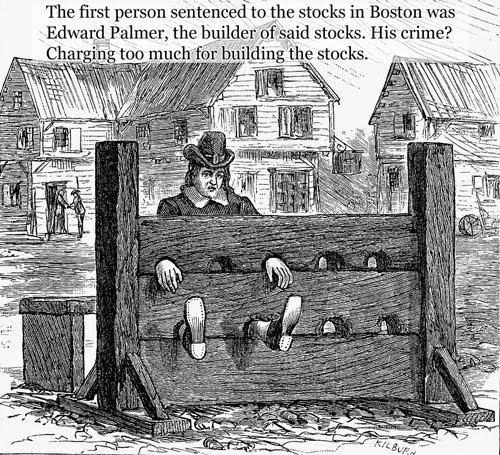
In addition to this incident, the only Edward Palmer I could find in records was a man on a Massachusetts commission with John Winthrop Jr., Joseph Dudley, and other first-generation immigrants, that disputed the Rhode Island boundary with Connecticut and Massachusetts in 1683, and sent a petition to the King. If that was the same man, he would have been in his 70s. But Edward was a common name, and there were many Palmers in New England by then.
 If you enjoy the articles and images in this blog, you'll love this book about life in England and New England in the 17th century, The Dyers of London, Boston, & Newport. It's full of anecdotes about famous people like John Winthrop, Anne Hutchinson, and the amazing Dyers, but also people and events that have been forgotten for 350 years. Paperback and Kindle.
If you enjoy the articles and images in this blog, you'll love this book about life in England and New England in the 17th century, The Dyers of London, Boston, & Newport. It's full of anecdotes about famous people like John Winthrop, Anne Hutchinson, and the amazing Dyers, but also people and events that have been forgotten for 350 years. Paperback and Kindle.
Published on January 08, 2015 00:09
December 26, 2014
If you have these, I have THESE
If you have these...

I have THESE:
 FIVE-STAR reviews!
FIVE-STAR reviews!
Recent, original, ground-breaking research of English and New England primary sources.Available in paperback or Kindle e-book http://bit.ly/RobinsonAuthor

I have THESE:
 FIVE-STAR reviews!
FIVE-STAR reviews! Recent, original, ground-breaking research of English and New England primary sources.Available in paperback or Kindle e-book http://bit.ly/RobinsonAuthor
Published on December 26, 2014 18:53
November 30, 2014
Christmas in 17th century England and America

© 2014 Christy K Robinson
A very happy holiday season to friends, readers, Dyer descendants, author colleagues, and those who enjoy this blog for its wide-ranging historical research presented in laymen's terms.
If you know of others with similar interests, I hope you'll share the three Dyer books and the Mary Dyer letter poster, either by giving them as gifts, or by sharing the links to them in this blog.
I hope you'll enjoy this small collection of articles and images of what Christmas and Advent season would have been like for our ancestors of 11 to 14 generations ago! And feel free to share it in Facebook and Twitter.
Mary Dyer and Christmas
by Christy K Robinson
This article describes customs of Advent and Christmas in the early and mid-1600s, across Great Britain and the colonies of New England, including Rhode Island, where William Dyer was a government official.
Also in this blog: Enlightened
by Christy K Robinson
Oliver Cromwell cancels Christmas
by Sarah Butterfield
The Puritan problem with Father Christmas
by Barbara Wells Sarudy
Published on November 30, 2014 23:00
November 18, 2014
Ride the TITLE WAVE into the 17th century
 Books by Eve LaPlante, David Teems, Francis Bremer,
Books by Eve LaPlante, David Teems, Francis Bremer, John Fox, and Nathaniel Philbrick. There’s a vast crowd of enthusiasts reading and discussing everything medieval and renaissance. But time didn’t stop with Elizabeth Tudor’s death in 1603. Are you looking for the rest of the story?
King James, his son King Charles I, and grandsons Charles II and James II kept the drama level high and dangerous in the seventeenth century. Their marriages and lovers, births and deaths, political intrigues, religious conflicts, witch hunts, and wars marked the beginning of our modern period. Their aristocrats and politicians, tradesmen, midwives, ministers, writers, musicians, scientists, and artists changed the world.
Have you noticed that it’s the gift-giving season? Why not knock out your whole gift list right now with these suggestions? The gift of a book is one that's remembered for years. Some people find it convenient to buy books for all their siblings, or as appreciation gifts for their children’s teachers. You might give paperback books to some in the family, or use the Kindle-gift option. Some books are stand-alone, some are part of a series.
This is a list of authors who have the 17thcentury covered, from Shakespeare and midwife forensic investigators to barber surgeons, Charles II’s mistresses, men and women who founded American democracy, servants and highway robbers, people who gave their lives for their principles or just because they were falsely accused as witches. In these books you’ll find sumptuous gowns and high society, educated women, poverty, prostitutes, and massacres, childbirth and plague, castles and manors, cathedrals and meetinghouses—even a vampire.
Our ninth or tenth great-grandparents knew these people—or were these people. (Well, probably not the vampire—but everyone else!) Discover what their lives were like, and how their lives formed who you are. Many of the book characters from the 17thcentury are based on facts, events, and real people. The authors, in addition to their literary skills, have spent months and years in research to get the 17thcentury world “just right,” so you’ll get your history veggies in a delicious brownie.
Ride the wave of the time-space continuum into the 17thcentury with these award-winning and highly-rated authors. The images you see are a small sample of what's available from this talented group! Click the highlighted author’s name to open a new tab.
Anna Belfrage — Time-slip (then and now) love and war.
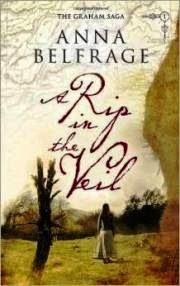
Jo Ann Butler — From England to New England: survival, love, and a dynasty.
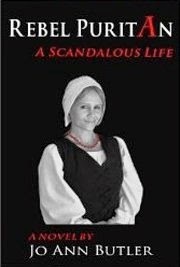
Susanna Calkins — Murder mysteries set in 1660s London.
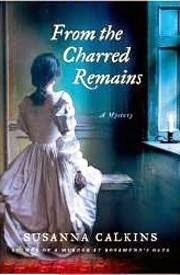
Francine Howarth — Heroines, swashbuckling romance.
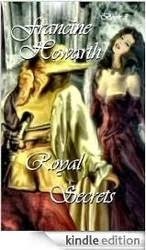
Judith James — Rakes and rogues of the Restoration.

Marci Jefferson — Royal Stuarts in Restoration England.
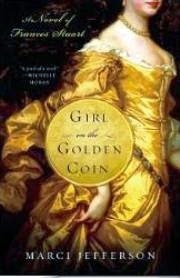
Elizabeth Kales — French Huguenot survival of Inquisition.

Juliet Haines Mofford — True crime of New England, pirates.
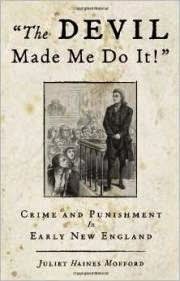
Mary Novik — Rev. John Donne and daughter.
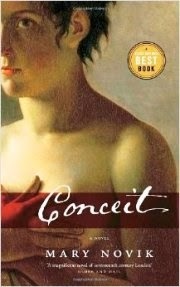
Donald Michael Platt — Spanish Inquisition cloak and dagger.
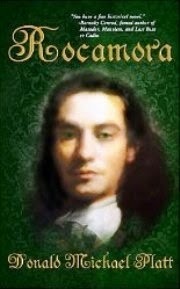
Katherine Pym — London in the 1660s.
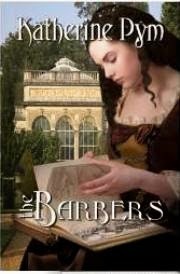
Diane Rapaport — Colonial New England true crime.
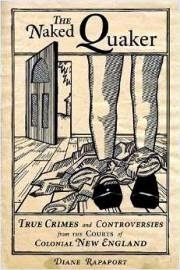
Peni Jo Renner — Salem witch trials.
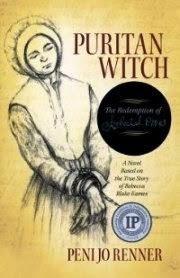
Christy K Robinson — British founders of American democracy and rights.
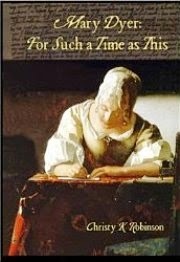
Anita Seymour — Royalists and rebels in English Civil War.
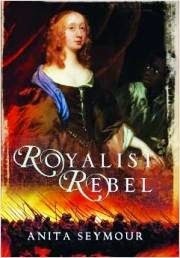
Mary Sharratt — Witches (healers) of Pendle Hill, 1612.
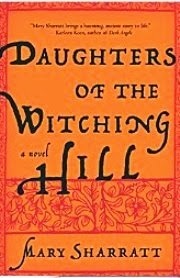
Alison Stuart — Time-slip war romance, ghosts.
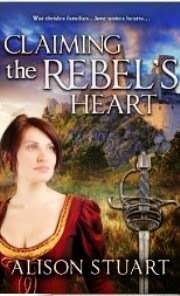
Deborah Swift — Servant girls running for lives, highwaywoman.
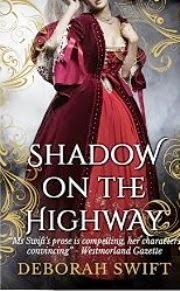
Ann Swinfen — Farmers fighting to keep land, chronicles of Portuguese physician.
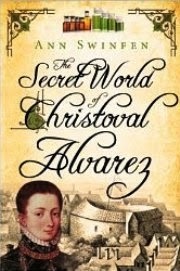
Sam Thomas — Midwife solves murders in city of York.
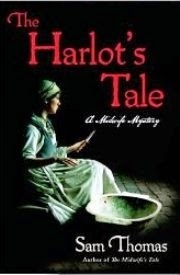
Suzy Witten — Salem witch trials.
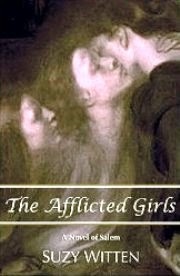
Andrea Zuvich — Vampire in Stuart reign, Duke of Monmouth and mistress.
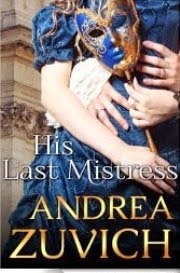
Introduction and illustrated table by Christy K Robinson . You're welcome to share this page in your blogs, Facebook, Twitter, Pinterest, etc. Shortened URL: bit.ly/1xAUir1

Published on November 18, 2014 14:10
November 11, 2014
Thou-Tube: a 17th-century musical playlist
© 2014 Christy K Robinson
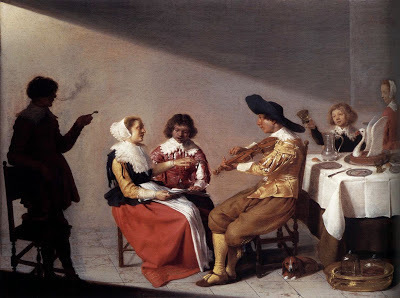 I've started a Thou-Tube (oops, I mean YouTube) playlist of 17th-century music. Most of the music, except for the Henry Purcell pieces, was composed and played during the first half of the 17th century, during the lifetimes of William and Mary Dyer, and Anne and William Hutchinson.
I've started a Thou-Tube (oops, I mean YouTube) playlist of 17th-century music. Most of the music, except for the Henry Purcell pieces, was composed and played during the first half of the 17th century, during the lifetimes of William and Mary Dyer, and Anne and William Hutchinson. So turn up the external speakers, set the playlist to "play all," and do some housework, read this blog's 110+ archived articles in another tab, or relax with a book about the Dyers.
Here's the link to the playlist: https://www.youtube.com/playlist?list=PLbJLH1i37JVDU-omkR_K0fi5isOYmesWx
Published on November 11, 2014 16:22
November 10, 2014
Mary Dyer goes west (to AZ-CA-NV-UT-HI)
Mary Dyer debuted in the Adventist magazine Pacific Union Recorder, in November 2014. Read the article by
PDF
(turn to page 40), or in
digital flip-book
(turn to page 40). Or, if you click the photo below to enlarge it, you can read the slightly blurry screenshot. This feature was printed in the Arizona insert of the regional magazine.


Published on November 10, 2014 10:09
October 31, 2014
Hauntings, death, monsters, and witches
© 2014 Christy K Robinson
 Heretic burnings at Guernsey during 1550s, the time of the parents of
Heretic burnings at Guernsey during 1550s, the time of the parents of
Anne Hutchinson and John Winthrop, and grandparents of the Dyers.If you’re a frequent reader of this blog, you know that Mary Dyer was a woman who believed and lived in the Light of God. Because she believed in eternal life, death was nothing to be feared—in fact, she willingly laid down her own life to bring religious liberty to the oppressed.
However, Mary and William Dyer lived in an extremely superstitious, hyper-religious, brutal era. It wasn’t only the individuals who might have been cursed by a witch, but the entire community that feared them. Educated and illiterate people alike believed that their theocratic society as a whole had to purge evil, and to be pure and holy, which would hasten the Second Coming of Christ. (Why do you think the village of Naumkeag was renamed Salem? It was the New Jerusalem, the holy city of God.) Boston was to be “The City Upon a Hill” in Gov. John Winthrop’s sermon, that term taken from Jesus’ Sermon on the Mount. They believed that God demanded perfection of them before he could trust them not to pollute the Holy City in heaven.
On the European continent in the early 17th century, 30,000 innocent men and women were burned to death, believed to be witches. In England, hundreds of people, almost all them women, were tried, tortured, and hanged as witches, even though they were church members minding their own business. Midwives and healers were susceptible to accusations of witchcraft. If your patient recovered unexpectedly, or died, it must be because of the intervention of the devil.
In America, witch trials and executions took place 50 and 60 years before the famous Salem outbreak, in Connecticut and Massachusetts.
The Puritan Americans didn’t officially believe in ghosts because spirits went immediately to heaven or hell—but they did believe in ghosts, because Gov. John Winthrop wrote of spirits haunting the place where a ship had blown up because some drunken sailors shot a pistol into kegs of gunpowder.
John Winthrop’s Journal, January 1644:
 From the Tor Even Mathisen photo website,
From the Tor Even Mathisen photo website,
http://flickrhivemind.net/User/Tor%20Even%20Mathisen/Interesting
Governor Winthrop usually saw the wrath of God in disasters that befell “unrepentant sinners” such as these. But there’s more! About two weeks later, unexplained lights appeared in the sky where the ship had been.
Every natural history event (comet, meteor, eclipse, earthquake, severe weather) was considered a message from God, or manifestation of a curse on unbelievers. (But that’s never been limited to the 17thcentury: after catastrophic earthquakes and tsunamis, we’ve heard people talk about the devastation being the judgment of God upon unrepentant pagans. I had to edit sermons and articles of that false teaching at one point in my career.)
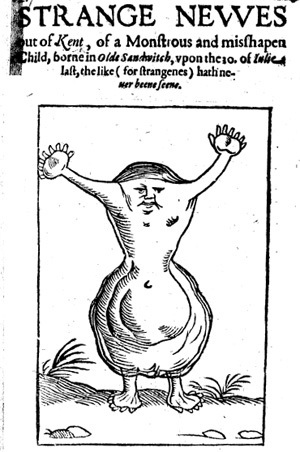 Neither Anne Hutchinson nor Mary Dyer were formally charged as witches, but there were murmurs about them, particularly after they both had tragic pregnancies amid charges of heresy. Mary’s anencephalic/spina bifida miscarriage, and Anne’s molar mass were called monsters. There’s so much interest in that, even today, that the “monster” article is the most-read piece in this blog.
Neither Anne Hutchinson nor Mary Dyer were formally charged as witches, but there were murmurs about them, particularly after they both had tragic pregnancies amid charges of heresy. Mary’s anencephalic/spina bifida miscarriage, and Anne’s molar mass were called monsters. There’s so much interest in that, even today, that the “monster” article is the most-read piece in this blog.
Here are the links to my articles about the unknown, unseen world as the Dyers, Hutchinsons, and Winthrops knew it.
Witches who weren't Witches
Endecott's memento mori death's head
The 1630 Comet of Doom
The Case of the Surfing Witch
 http://marybarrettdyer.blogspot.com/p/blog-page.html
There’s more—much more!—in the books Mary Dyer Illuminated(Vol. 1) and Mary Dyer: For Such a Time as This (Vol. 2). The stories of the unexplained phenomena came from the journals of John Winthrop, books, court records, and letters from eyewitnesses of the events. Find out more about the FIVE-STAR REVIEWS by historians, English professors, other discerning readers, and how to order the books at this link:
http://marybarrettdyer.blogspot.com/p/blog-page.html
Christmas is coming: these two books (or Kindle editions) would make fantastic gifts.
http://marybarrettdyer.blogspot.com/p/blog-page.html
There’s more—much more!—in the books Mary Dyer Illuminated(Vol. 1) and Mary Dyer: For Such a Time as This (Vol. 2). The stories of the unexplained phenomena came from the journals of John Winthrop, books, court records, and letters from eyewitnesses of the events. Find out more about the FIVE-STAR REVIEWS by historians, English professors, other discerning readers, and how to order the books at this link:
http://marybarrettdyer.blogspot.com/p/blog-page.html
Christmas is coming: these two books (or Kindle editions) would make fantastic gifts.
 Heretic burnings at Guernsey during 1550s, the time of the parents of
Heretic burnings at Guernsey during 1550s, the time of the parents of Anne Hutchinson and John Winthrop, and grandparents of the Dyers.If you’re a frequent reader of this blog, you know that Mary Dyer was a woman who believed and lived in the Light of God. Because she believed in eternal life, death was nothing to be feared—in fact, she willingly laid down her own life to bring religious liberty to the oppressed.
However, Mary and William Dyer lived in an extremely superstitious, hyper-religious, brutal era. It wasn’t only the individuals who might have been cursed by a witch, but the entire community that feared them. Educated and illiterate people alike believed that their theocratic society as a whole had to purge evil, and to be pure and holy, which would hasten the Second Coming of Christ. (Why do you think the village of Naumkeag was renamed Salem? It was the New Jerusalem, the holy city of God.) Boston was to be “The City Upon a Hill” in Gov. John Winthrop’s sermon, that term taken from Jesus’ Sermon on the Mount. They believed that God demanded perfection of them before he could trust them not to pollute the Holy City in heaven.
On the European continent in the early 17th century, 30,000 innocent men and women were burned to death, believed to be witches. In England, hundreds of people, almost all them women, were tried, tortured, and hanged as witches, even though they were church members minding their own business. Midwives and healers were susceptible to accusations of witchcraft. If your patient recovered unexpectedly, or died, it must be because of the intervention of the devil.
In America, witch trials and executions took place 50 and 60 years before the famous Salem outbreak, in Connecticut and Massachusetts.
The Puritan Americans didn’t officially believe in ghosts because spirits went immediately to heaven or hell—but they did believe in ghosts, because Gov. John Winthrop wrote of spirits haunting the place where a ship had blown up because some drunken sailors shot a pistol into kegs of gunpowder.
John Winthrop’s Journal, January 1644:
“Captain Chaddock [Englishman who had previously stolen a French ship] having bought from the French a pinnace of about 30 tons, he manned and fitted her to go to Trinidad, and riding before Boston ready to depart, and eight men aboard her, one striking ...fire with a pistol, two barrels of powder took fire and blew her up: five of the men being in the cabin were destroyed, and the other three being in the other part were much scorched and hurt, but got into their boat and were saved. The captain himself was then on shore at Boston. It is observable that these men making no use of the sudden loss of three of their company, but falling to drinking, etc., that very evening this judgment came thus upon them. It is also to be observed that two vessels have thus been blown up in our harbor, and both belonging to such as despised us and the ordinance of God amongst us.”
 From the Tor Even Mathisen photo website,
From the Tor Even Mathisen photo website, http://flickrhivemind.net/User/Tor%20Even%20Mathisen/Interesting
Governor Winthrop usually saw the wrath of God in disasters that befell “unrepentant sinners” such as these. But there’s more! About two weeks later, unexplained lights appeared in the sky where the ship had been.
“About midnight, three men, coming in a boat to Boston, saw two lights arise out of the water near the north point of the town cove, in form like a man, and went at a small distance to the town, and so to the south point, and there vanished away. They saw them about a quarter of an hour, being between the town and the governor's garden. The like was seen by many, a week after, arising about Castle Island and in one fifth of an hour came to John Gallop's point.”Rev. Davenport of New Haven reported that a ghost ship appeared in the clouds as a message from God that their ship, their investments, and of course, their beloved family members who were passengers, had been lost at sea. The Ghost Ship of 1647
Every natural history event (comet, meteor, eclipse, earthquake, severe weather) was considered a message from God, or manifestation of a curse on unbelievers. (But that’s never been limited to the 17thcentury: after catastrophic earthquakes and tsunamis, we’ve heard people talk about the devastation being the judgment of God upon unrepentant pagans. I had to edit sermons and articles of that false teaching at one point in my career.)
 Neither Anne Hutchinson nor Mary Dyer were formally charged as witches, but there were murmurs about them, particularly after they both had tragic pregnancies amid charges of heresy. Mary’s anencephalic/spina bifida miscarriage, and Anne’s molar mass were called monsters. There’s so much interest in that, even today, that the “monster” article is the most-read piece in this blog.
Neither Anne Hutchinson nor Mary Dyer were formally charged as witches, but there were murmurs about them, particularly after they both had tragic pregnancies amid charges of heresy. Mary’s anencephalic/spina bifida miscarriage, and Anne’s molar mass were called monsters. There’s so much interest in that, even today, that the “monster” article is the most-read piece in this blog. Here are the links to my articles about the unknown, unseen world as the Dyers, Hutchinsons, and Winthrops knew it.
Witches who weren't Witches
Endecott's memento mori death's head
The 1630 Comet of Doom
The Case of the Surfing Witch
 http://marybarrettdyer.blogspot.com/p/blog-page.html
There’s more—much more!—in the books Mary Dyer Illuminated(Vol. 1) and Mary Dyer: For Such a Time as This (Vol. 2). The stories of the unexplained phenomena came from the journals of John Winthrop, books, court records, and letters from eyewitnesses of the events. Find out more about the FIVE-STAR REVIEWS by historians, English professors, other discerning readers, and how to order the books at this link:
http://marybarrettdyer.blogspot.com/p/blog-page.html
Christmas is coming: these two books (or Kindle editions) would make fantastic gifts.
http://marybarrettdyer.blogspot.com/p/blog-page.html
There’s more—much more!—in the books Mary Dyer Illuminated(Vol. 1) and Mary Dyer: For Such a Time as This (Vol. 2). The stories of the unexplained phenomena came from the journals of John Winthrop, books, court records, and letters from eyewitnesses of the events. Find out more about the FIVE-STAR REVIEWS by historians, English professors, other discerning readers, and how to order the books at this link:
http://marybarrettdyer.blogspot.com/p/blog-page.html
Christmas is coming: these two books (or Kindle editions) would make fantastic gifts.
Published on October 31, 2014 12:40



